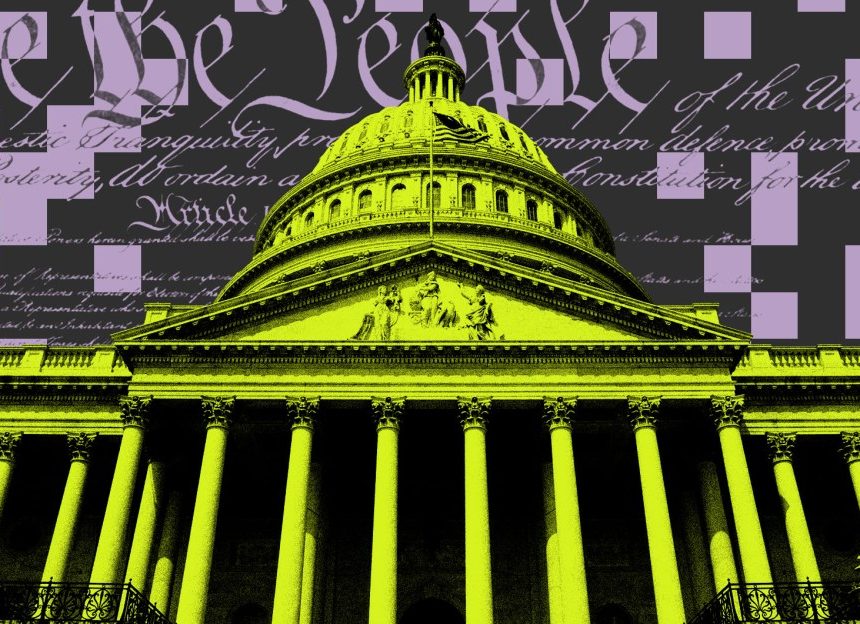Amid a boom in Irish culture across music, literature, film and fashion, the Irish language – Gaeilge – is also experiencing a revival. Once the majority’s native tongue, it was assailed and diminished as a daily, working, spoken language under British colonialism and became largely confined to rural west coast districts for much of the 20th century, kept alive by generations of families. But over recent decades the number of schools teaching the national curriculum exclusively through Irish has risen significantly, from fewer than 20 in the 1970s, to more than 200 today. The 2022 census showed a 6% increase in the number of people able to speak Irish compared with 2016. Irish is a core subject on the curriculum and compulsory in all schools.
Yet in the academic year of 2024-25, a record number of pupils – 14% of the post-primary school population – were granted exemptions from studying Irish, a record number. This makes me sad for the young people who will miss out – not just on the growing professional opportunities it provides, but the richness of the language and the window into Irish culture it cracks open.
The number of Ukrainians now attending school in Ireland explains at least some of the rise in numbers seeking to opt out. There are close to 7,000 Ukrainian pupils in post-primary schools across the country. Exemptions can only be sought if a student was born outside Ireland, was educated outside Ireland for a significant period, or has needs that affect learning a language.
And yet many Ukrainians are of course learning and studying Irish – along with significant numbers of Poles and Latvians. The broader issue is a longstanding and systemic one, where the language – despite its growing popularity – is still not seen as a priority by some Irish parents, or is perceived as overly challenging or even superfluous. Some parents, focused on exam points their children need to access university courses, argue that Irish should be optional.
How the language is taught in schools has been a matter of debate since the foundation of the state a century ago. For decades, the same grievances have been repeated, with some justification: primarily that while Irish language, literature and poetry are studied, there isn’t enough emphasis on everyday usage, meaning young people can be “learning” Irish for a decade, yet many still emerge without basic conversational skills. Pupils take an oral test in their final exams, yet stock phrases and rote learning remain a feature of schooling.
I attended a post-primary Gaelscoil (Irish-medium school) in Dublin in the 1990s into the 2000s. This was not perceived as fashionable. Studying one’s entire curriculum through Irish was sometimes viewed as idiosyncratic or nationalistic. But the language was a shared code among my school friends, and I maintained it on leaving school. It opened up opportunities. I presented a music show for Ireland’s Irish-language television broadcaster, TG4, and this year, for the first time, I am writing in Irish for print, as the Irish Times launched a weekly Irish-language supplement, called Scéal (Story).
Although I still struggle with rustiness and confidence in speaking and writing the language, “keeping” and not “losing” my Irish is probably the greatest gift I have given myself. Irish is a portal, a lyrical language intrinsically connected to the natural world. Early Irish literature is among the oldest vernacular literature in western Europe. As a spoken language, Irish predates English by a millennium. Its early writing system, Ogham, written vertically as a series of lines and strokes, has an alphabet based on trees. The first letter is beith, meaning birch. There’s dair meaning oak, coll, meaning hazel, and so on.
Nature and the environment permeate the language viscerally. The word for photography, grianghrafadóireacht, literally means to make a chart of the sun. English has nothing on the spirit of Irish phrases, and the fun, evocative, poetic journeys they can take. Many of these were given new life when the writer and documentary maker Manchán Magan published his landmark book, Thirty-Two Words For Field, in 2020.
So if you wanted to playfully yet emphatically berate someone, you could say “go n-ithe an cat thú, agus go n-ithe an diabhal an cat” (“may the cat eat you, and may the devil eat the cat”). There are dozens of words for penis in Irish, including bliúcán (a wild carrot). One of the terms for menstruation is blathscaileadh, meaning the release of flowers.
Enter the Kneecap effect. Many younger people – inspired by the Belfast and Derry rap group – are now embracing Irish. Kneecap themselves repurpose old terms for a hard-partying present. Snaois, meaning snuff, becomes cocaine. Dúidín – a small clay pipe for tobacco – is their word for a spliff. “3CAG” stands for trí chosan agus guta, three consonants and a vowel, meaning MDMA.
Kneecap’s reinvention of antiquated words is especially playful, but it’s their declaration of Irish as a punk language and part of a process of personal decolonisation that has become a motivating and mobilising cultural and political force. Last month, 25,000 people marched in Dublin demanding more investment in the language and in Gaeltacht (Irish-speaking) areas, with organisers framing the language as “an inclusive one, one that stands against far-right extremism and fascism”.
after newsletter promotion
Despite the rise in school exemptions, the enthusiasm for Irish, and a growing collective confidence in speaking it (as one old rhyme goes, “is fearr Gaeilge briste ná Béarla cliste” – broken Irish is better than clever English), is increasingly evident. Even my local pub in Dublin offers a euro discount when you order a drink in Irish.
But perhaps the most revelatory moments happen in private. During the pandemic, myself and my wife – who grew up in the Irish-speaking area of northwest County Donegal, but “lost” her Irish over time – began speaking it more frequently at home. Having moved to Dublin in the late 1980s, she had also lost her Donegal accent. But Gaeilge has dialects and accents (canúint) that instantly identify one’s specific geographical roots. When she spoke Irish, I heard her true accent for the first time. With it, came the unique vocabulary of her home county’s landscape and culture. An oral artefact, as though preserved in amber, suddenly – or as we say, “go tobann” – was alive again.


